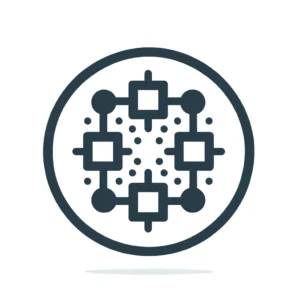“`html
The NFT landscape is experiencing a significant shift, with sales on Polygon outpacing those on Ethereum for the first time. This marks a notable moment in the competition between blockchain platforms as they vie for dominance in the NFT market.
Polygon Surpasses Ethereum in Weekly NFT Sales
Recent data indicates that NFT sales on Polygon reached $22.1 million in the seven days leading up to April 22, slightly ahead of Ethereum, which recorded $21.8 million during the same period. This milestone highlights the growing traction of Polygon as a preferred blockchain for NFT projects.
In addition to total sales volume, Polygon also outperformed Ethereum in terms of the number of individual buyers. Over the past week, 39,027 buyers purchased NFTs on Polygon, reflecting an impressive 81.61% increase. In comparison, Ethereum registered 36,544 individual buyers during the same timeframe.
Courtyard: The Key Driver Behind Polygon’s Growth
The surge in Polygon’s NFT sales is largely attributed to Courtyard, a real-world asset (RWA) project that integrates NFTs with physical collectibles. Over the past week, Courtyard accounted for $20 million of Polygon’s total NFT sales, representing the bulk of its transaction volume. Notably, on April 22 alone, Courtyard recorded $2.746 million in NFT sales.
Courtyard specializes in selling physical trading cards, such as rare baseball, basketball, and Pokémon cards. Each card is linked to a corresponding NFT on the Polygon blockchain. To ensure secure storage, these physical cards are kept in a vault. Additionally, Courtyard offers a unique feature: a virtual vending machine that provides users with random cards, encouraging them to start building their collections.
Polygon’s Growing Role in the Blockchain Ecosystem
The success of Courtyard mirrors a broader trend in which Layer 2 networks, like Polygon, are increasingly capturing traffic and market share from Ethereum. While this growth has sparked criticism from some Ethereum supporters who believe Layer 2 solutions are siphoning value from the main network, Polygon remains closely linked to Ethereum.
Polygon benefits from Ethereum’s robust decentralization and security framework. As an EVM-compatible blockchain, it ensures seamless interoperability with Ethereum’s base layer and other Layer 2 solutions, making it an integral part of Ethereum’s ecosystem.
What This Means for NFT Enthusiasts and Investors
The rise of Polygon as a dominant player in the NFT space underscores the importance of exploring alternative blockchain platforms. For NFT collectors and investors, this shift highlights the need to diversify portfolios across multiple networks to leverage emerging opportunities.
- Keep an eye on projects like Courtyard that integrate physical assets with NFTs, as they are gaining traction.
- Understand the benefits of Layer 2 networks, including lower transaction fees and faster processing times compared to Ethereum.
- Monitor trends in buyer activity and sales volume to identify potential growth areas in the NFT market.
As the NFT space continues to evolve, platforms like Polygon are becoming increasingly attractive for developers and investors alike. By staying informed about such shifts, you can better navigate the rapidly changing blockchain landscape and capitalize on emerging opportunities.
“`
























